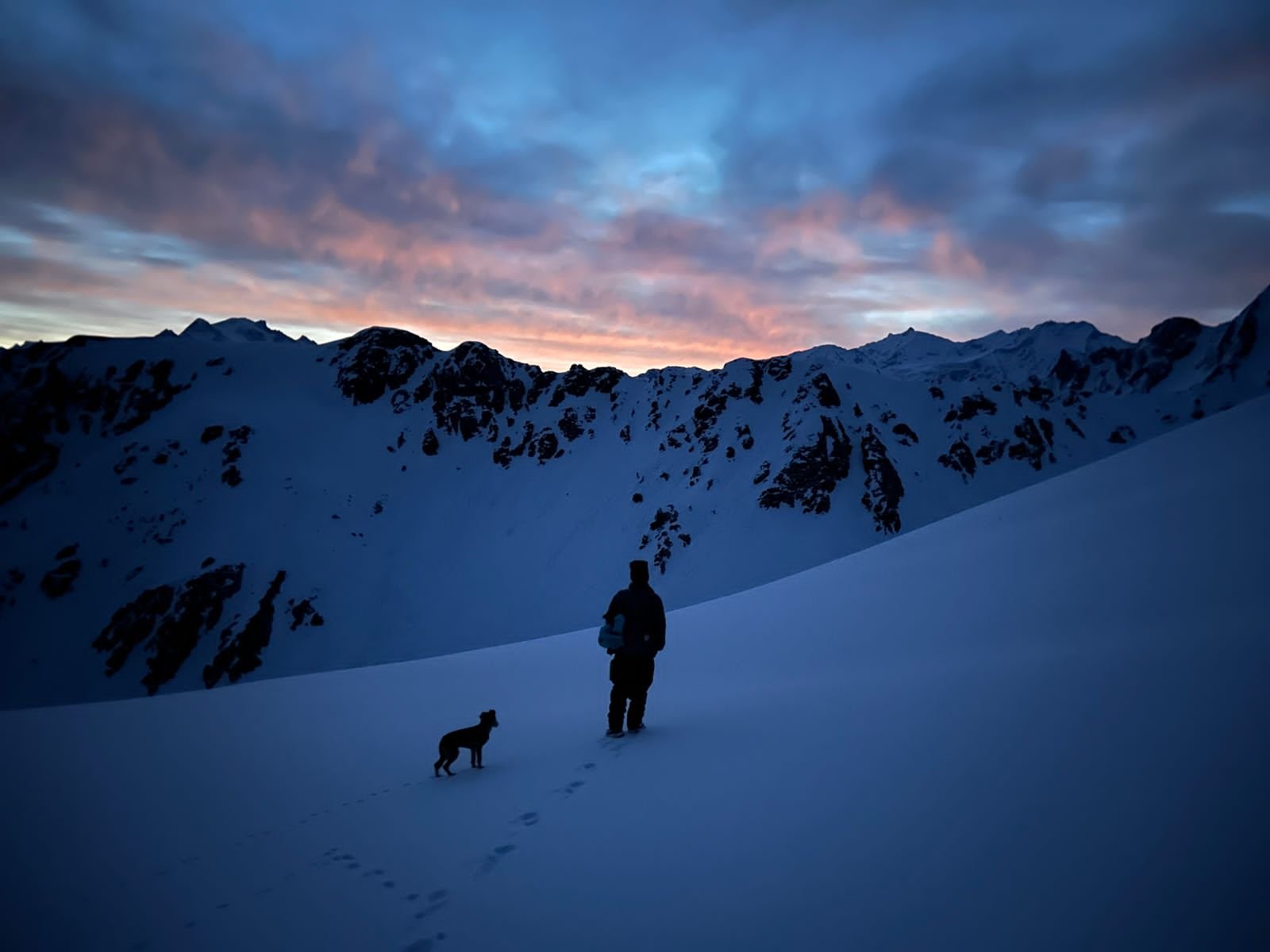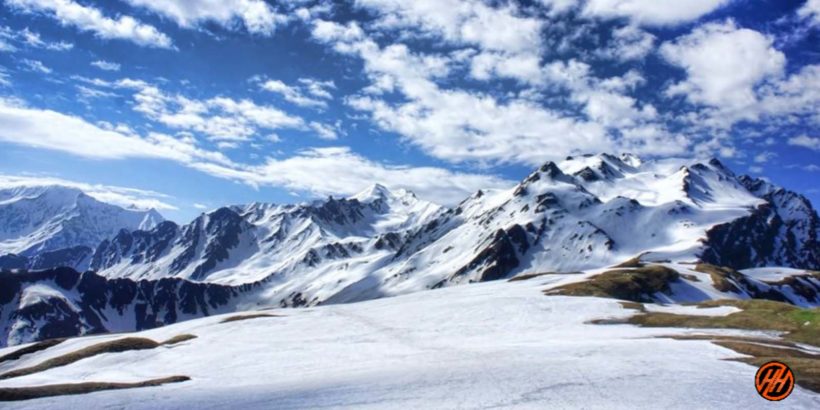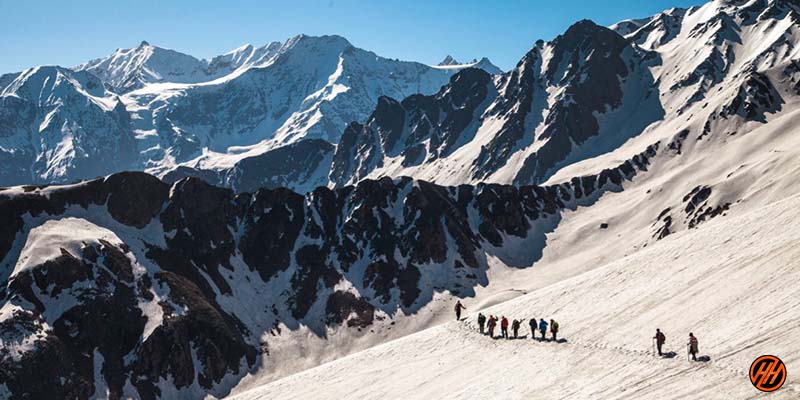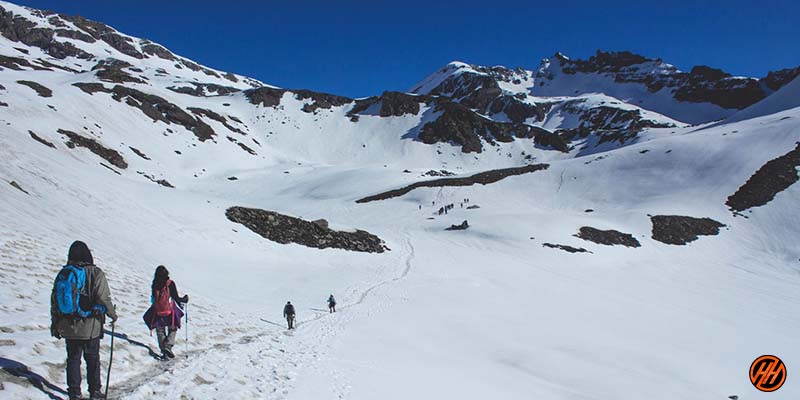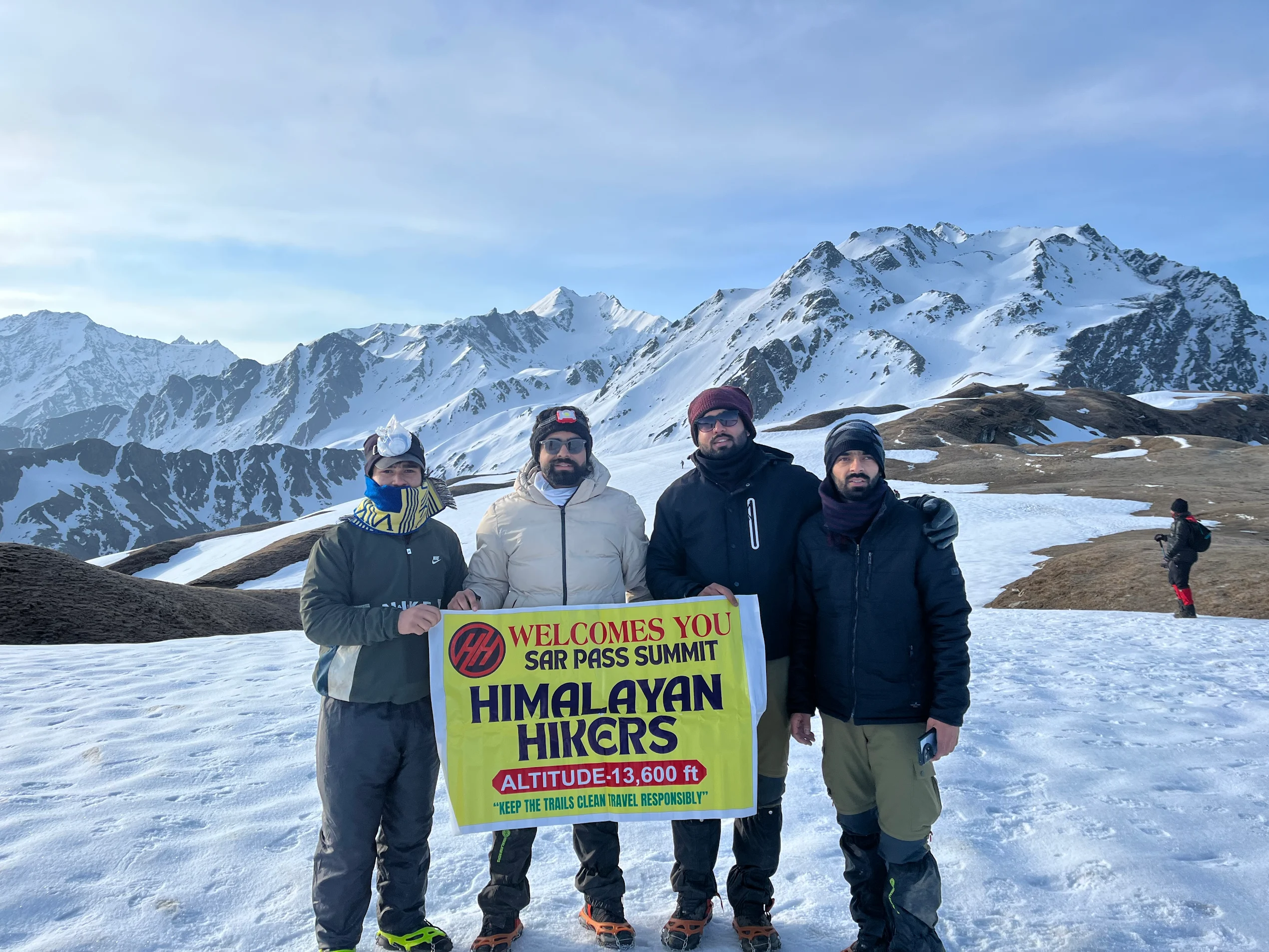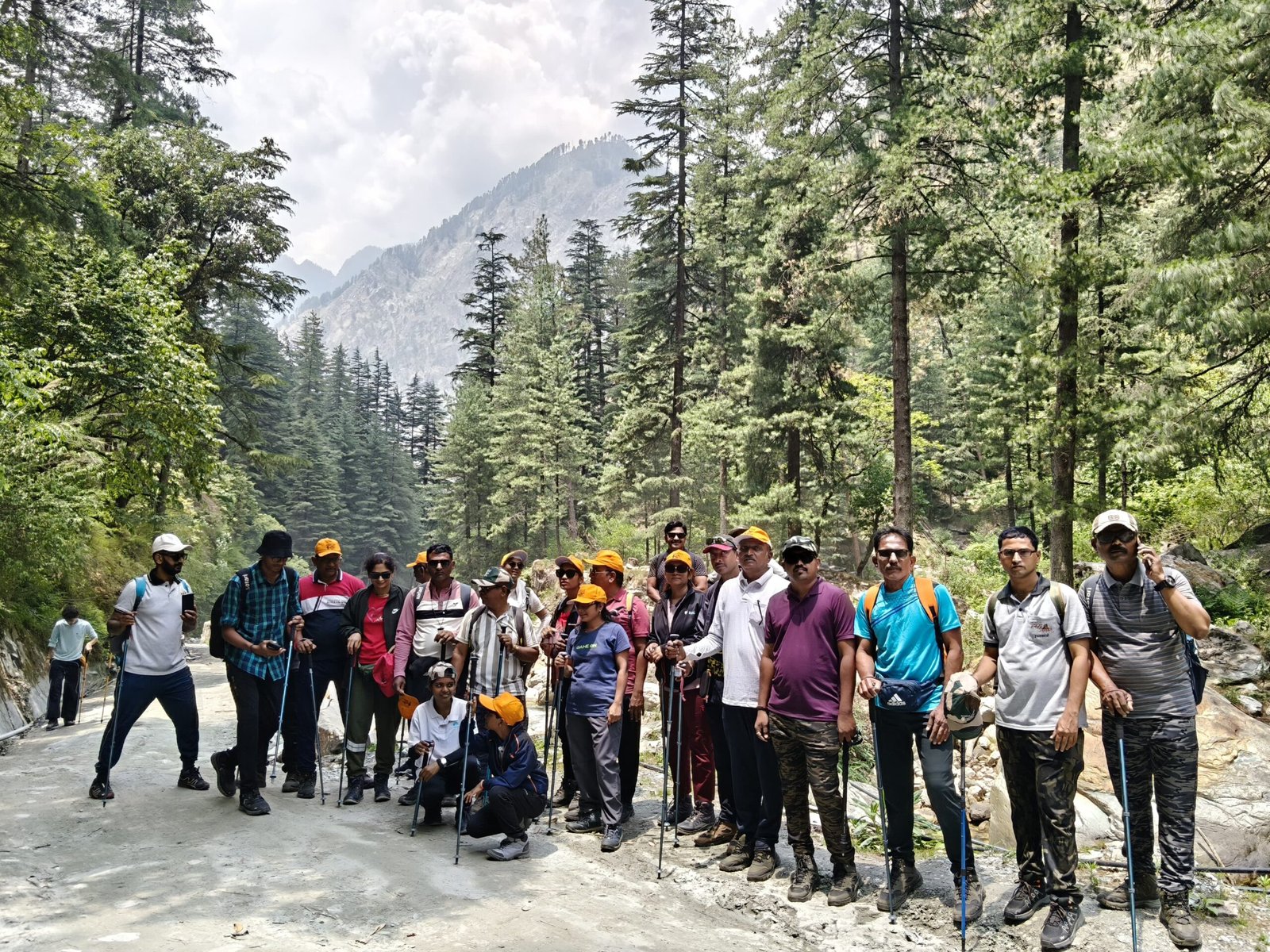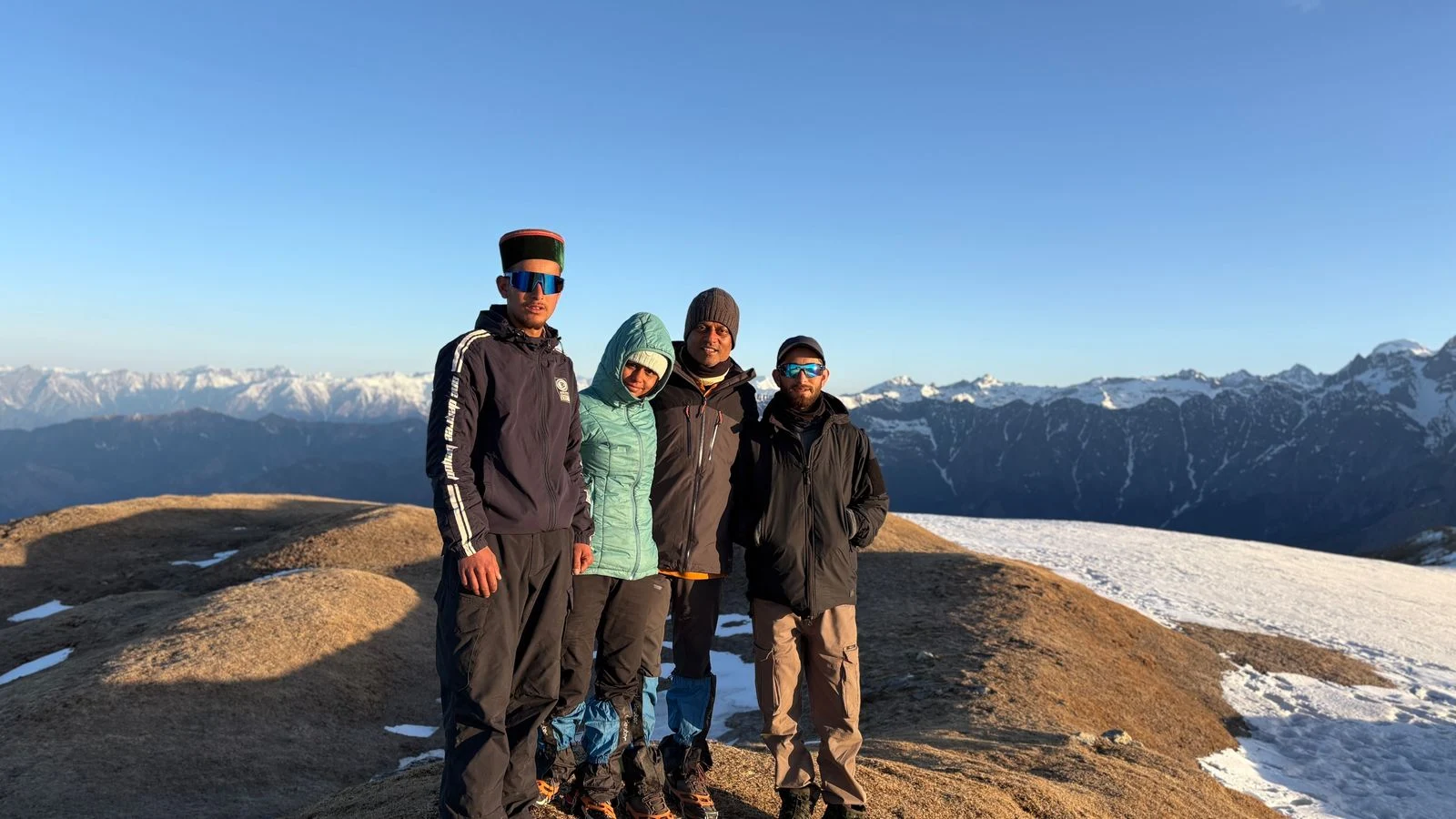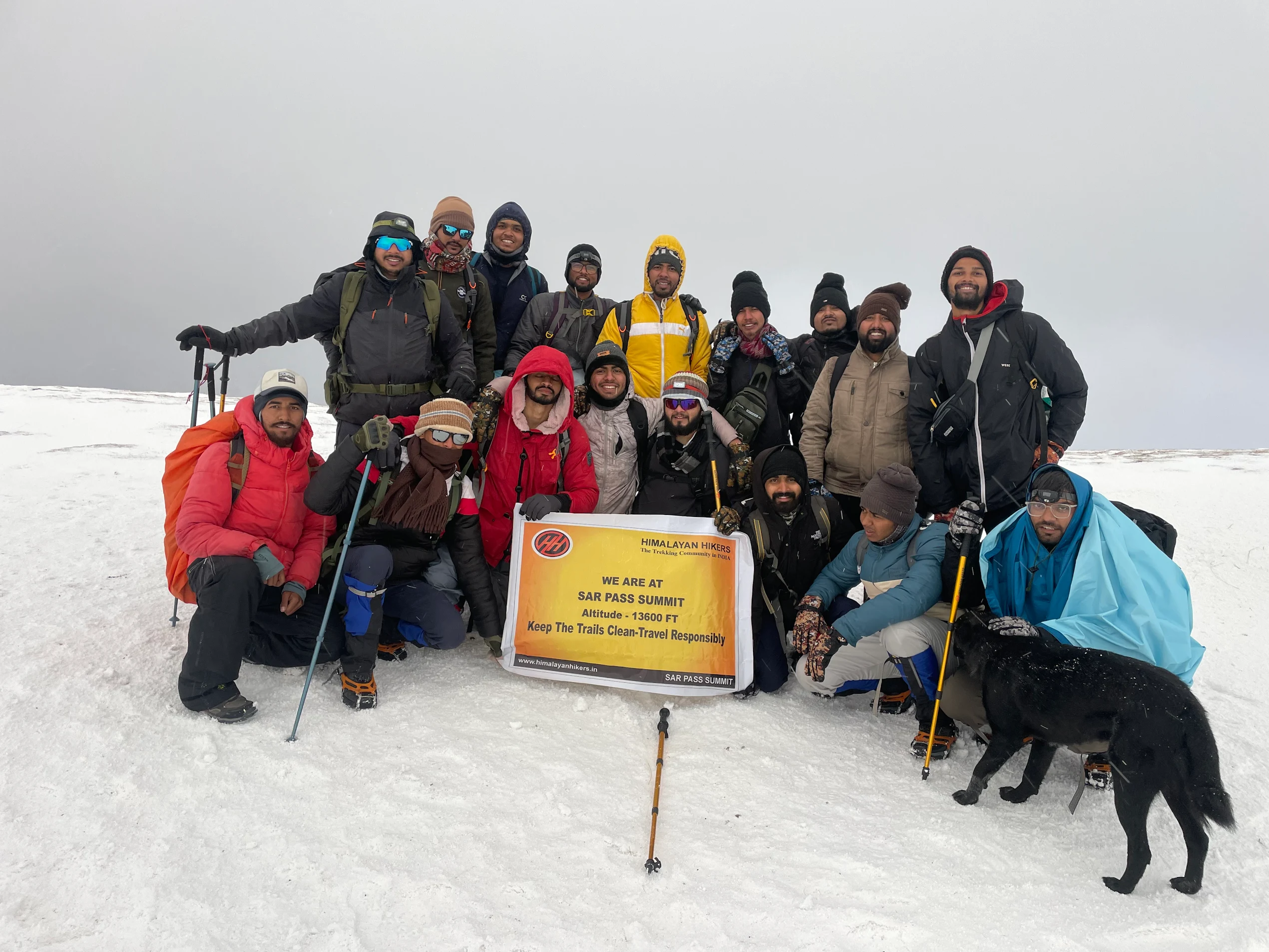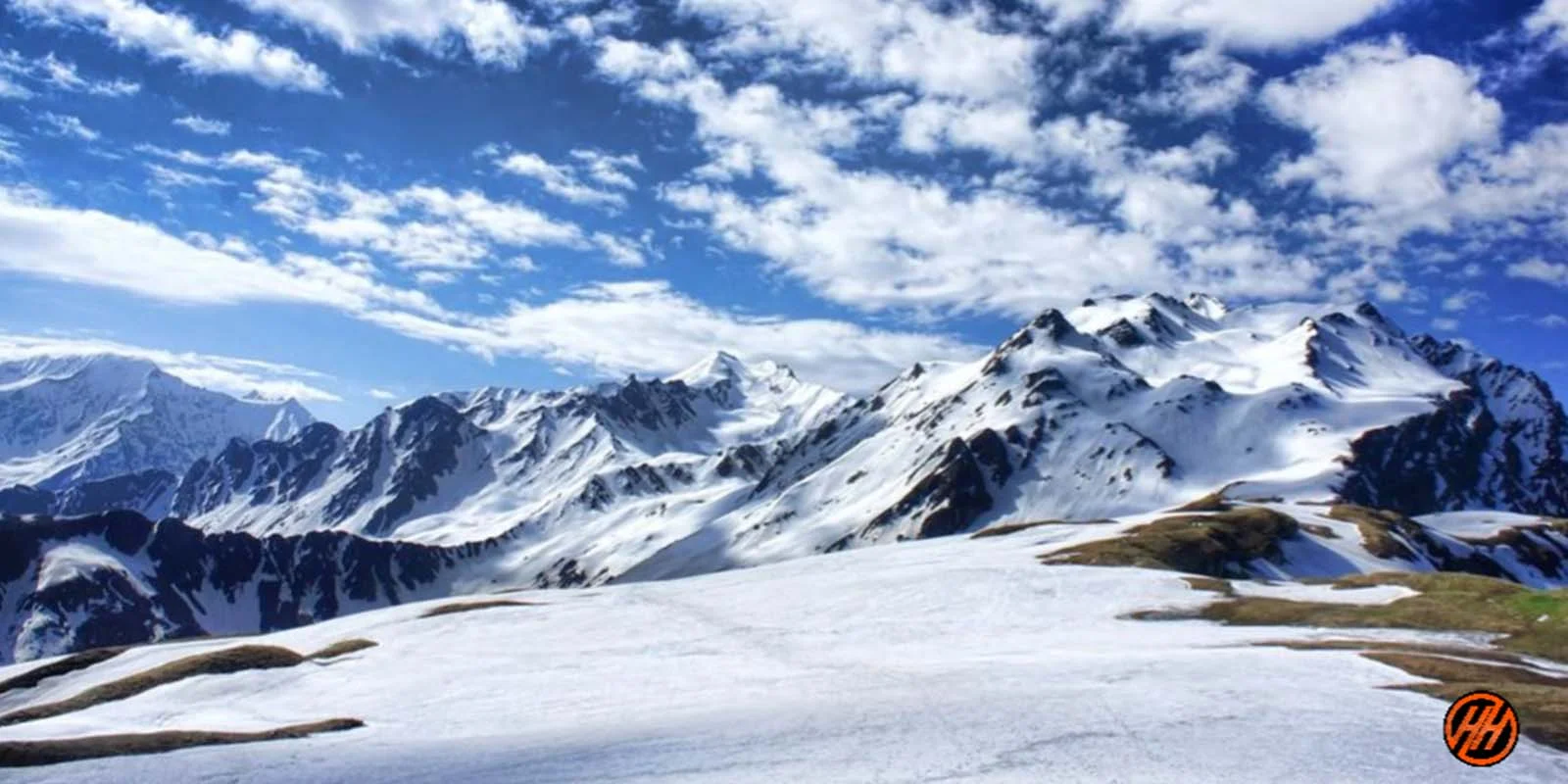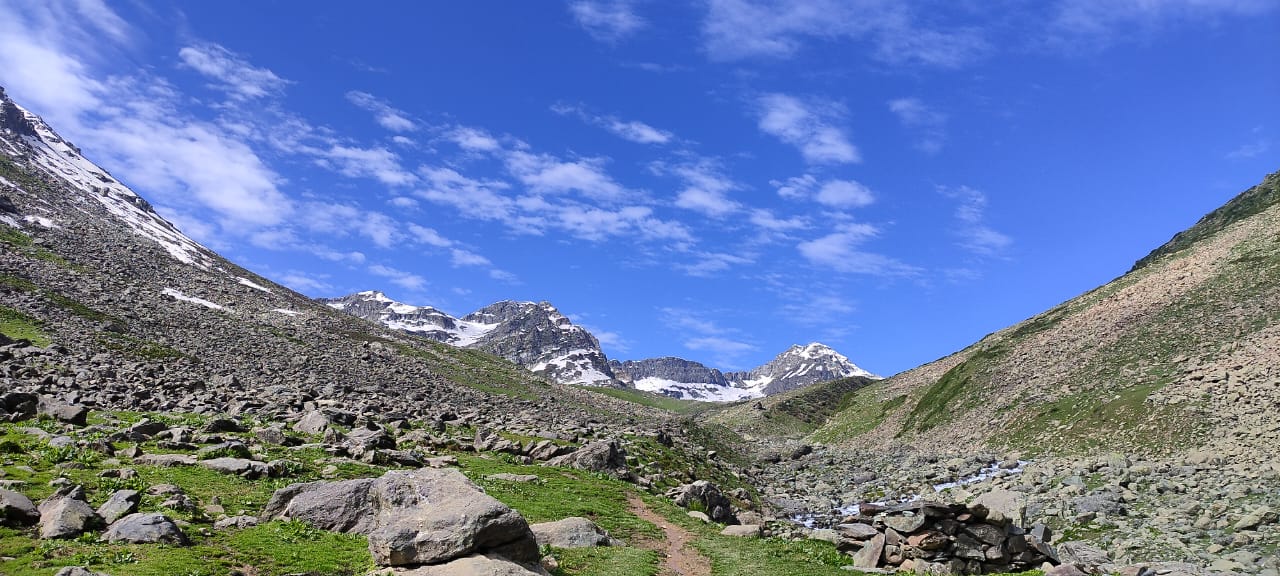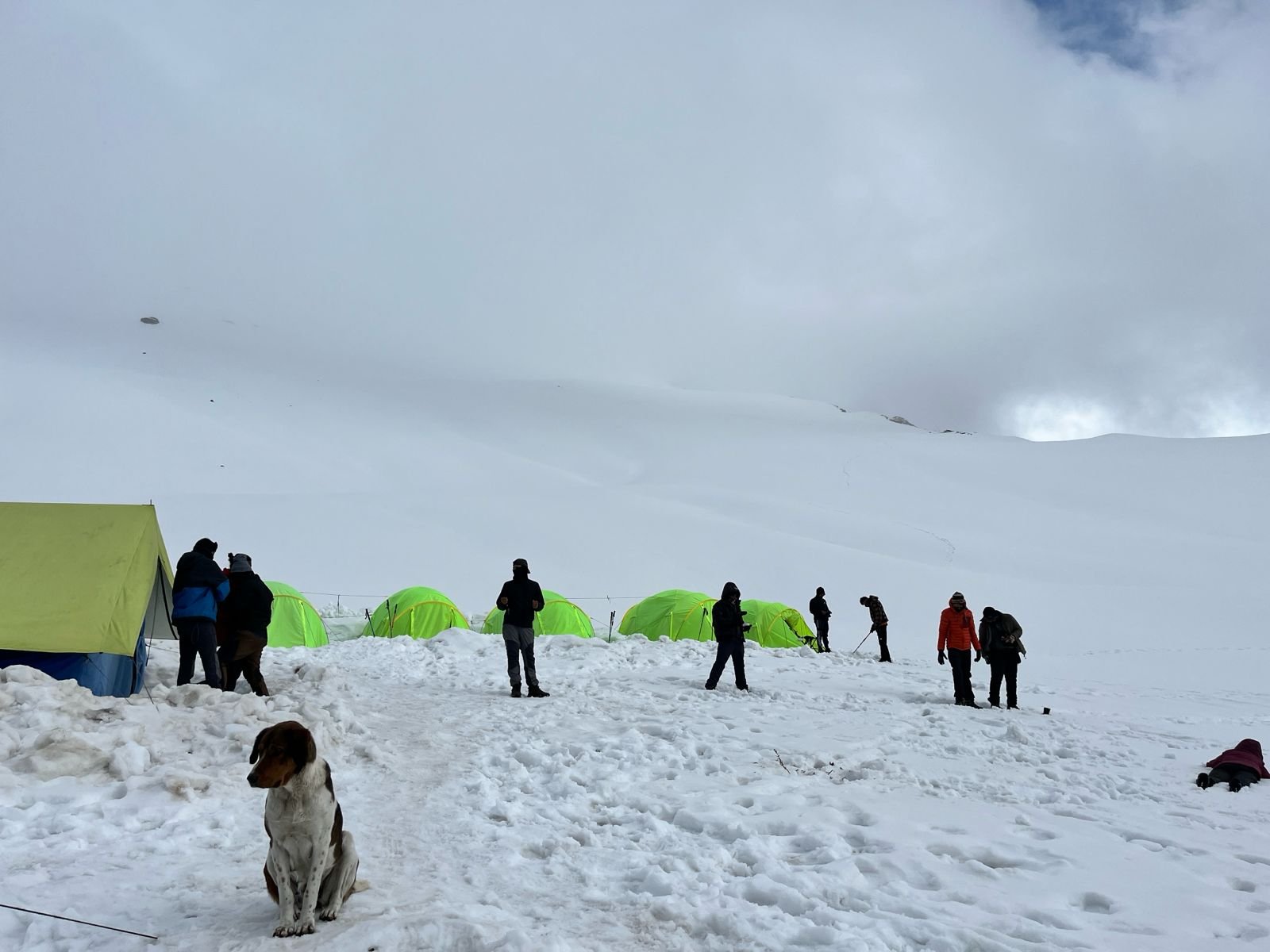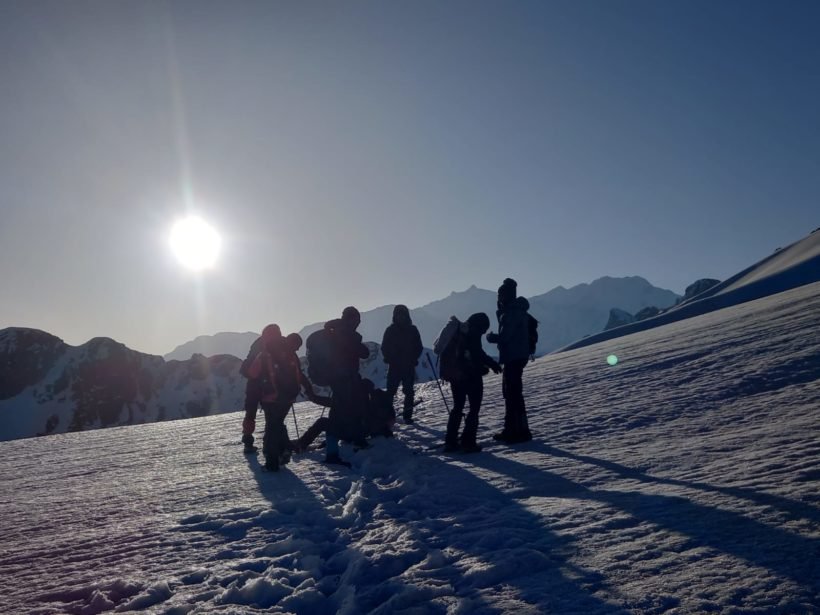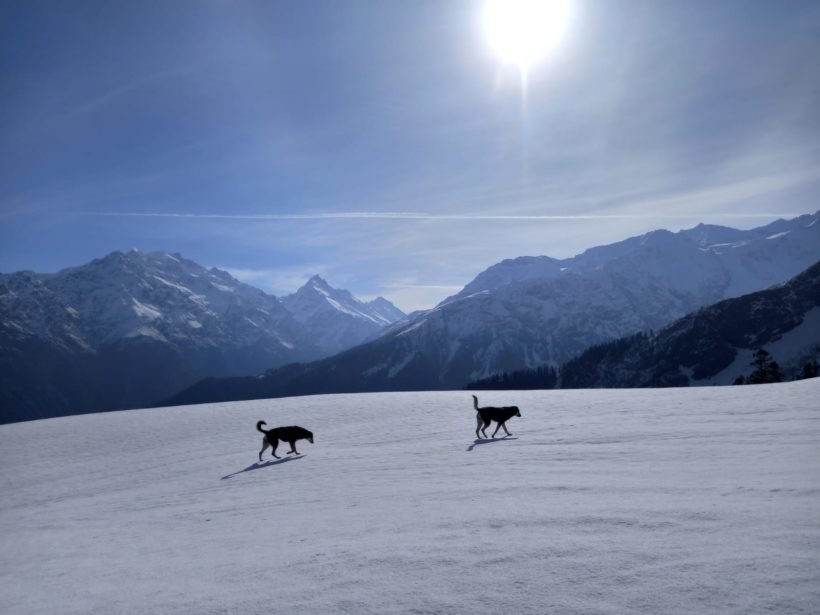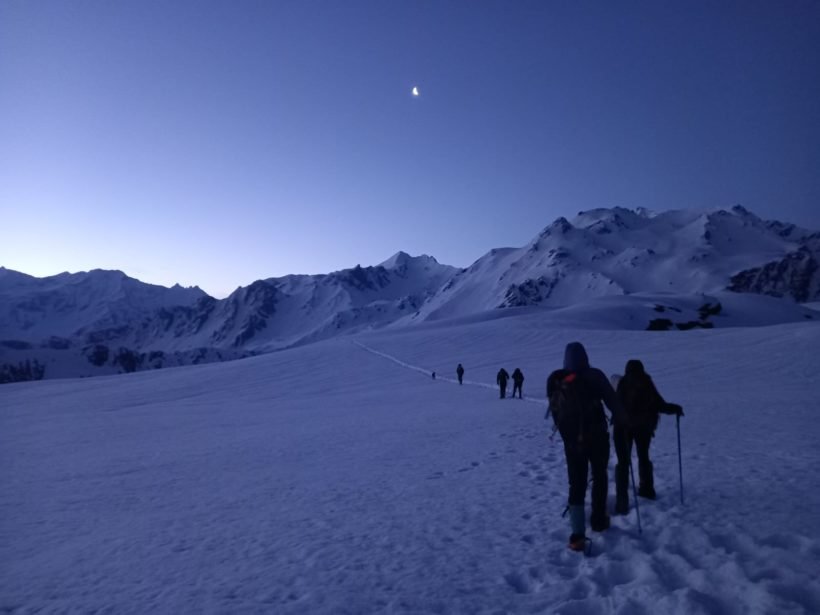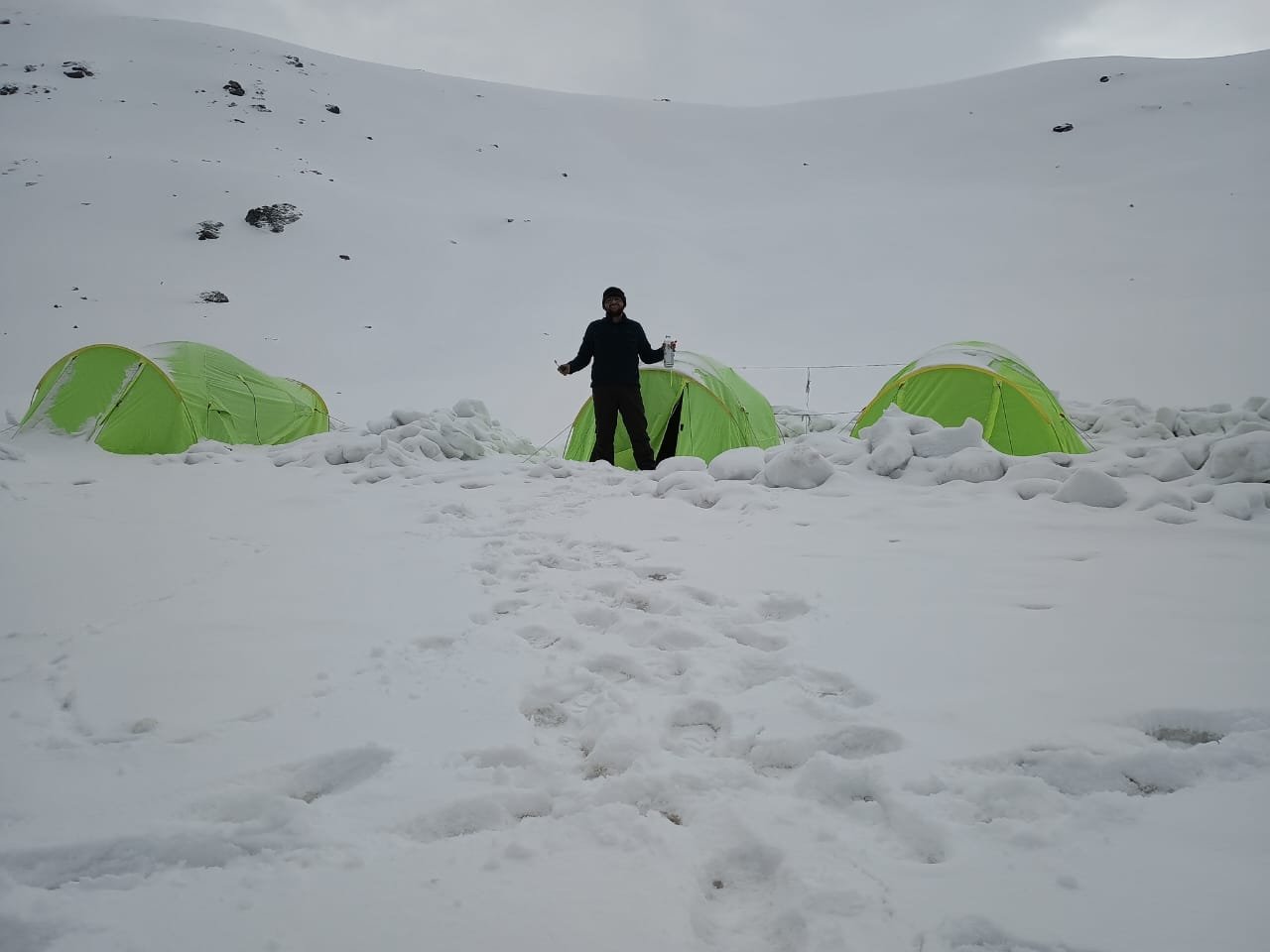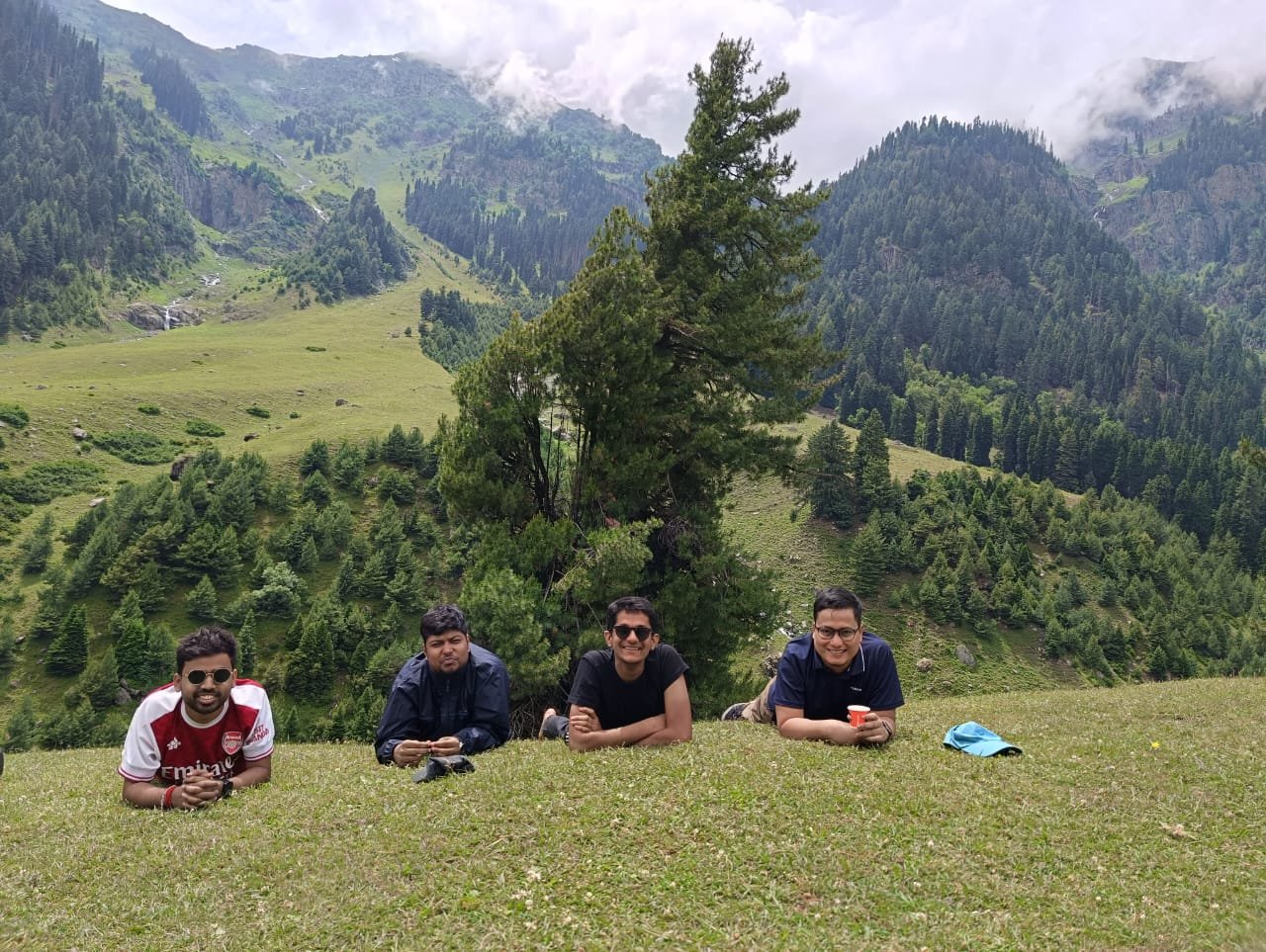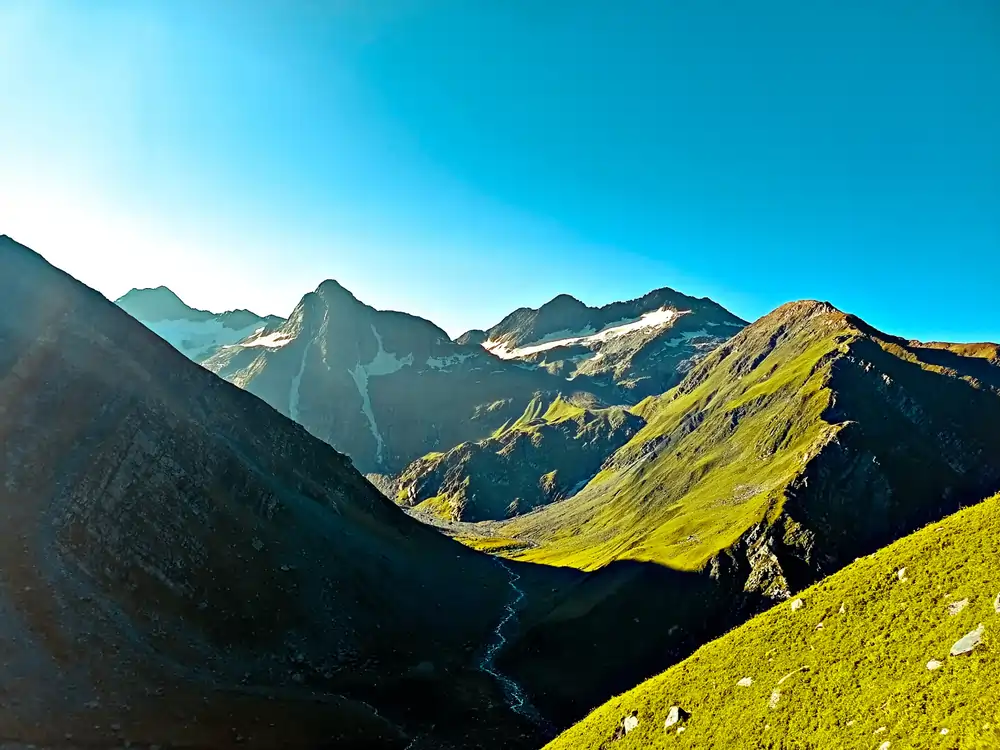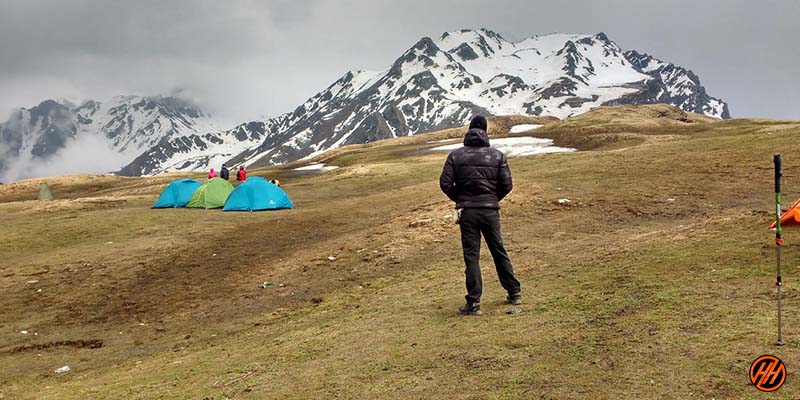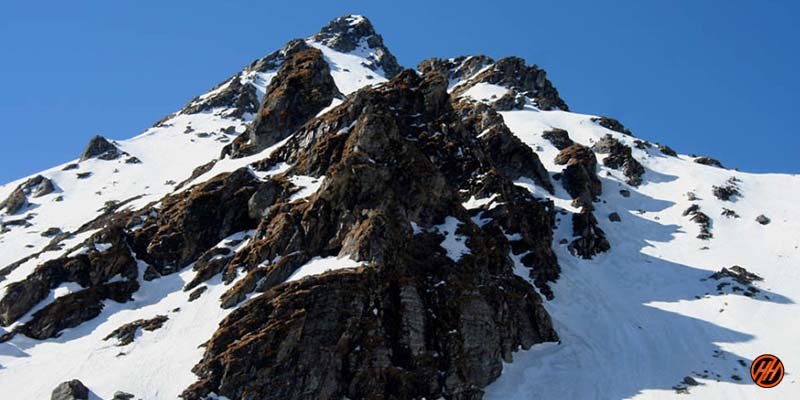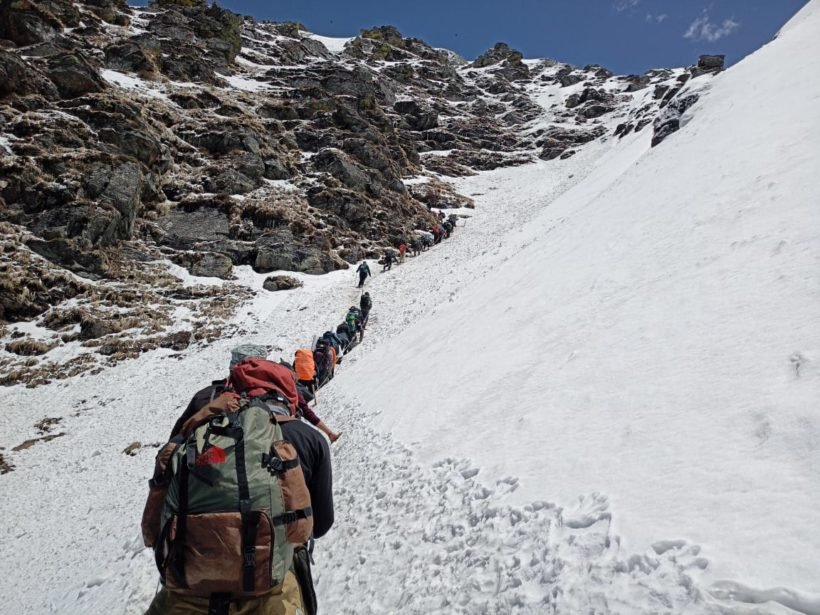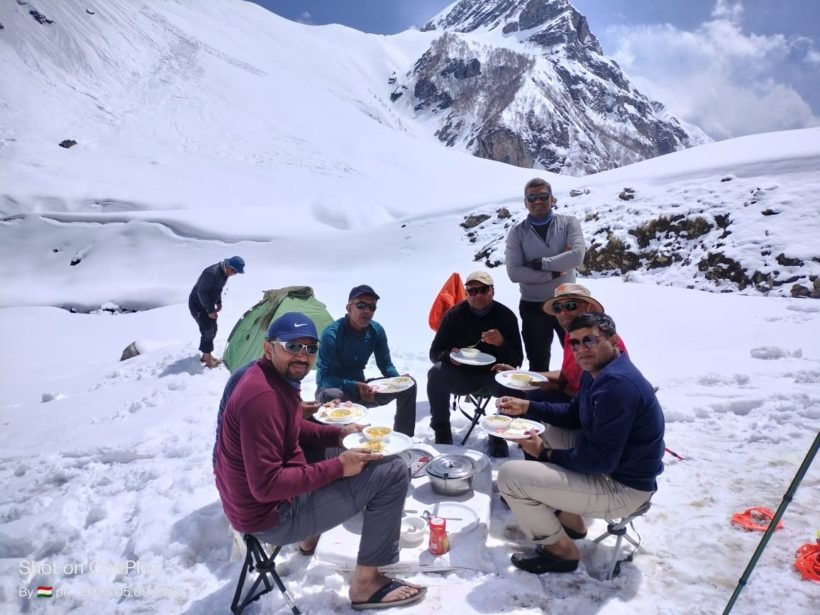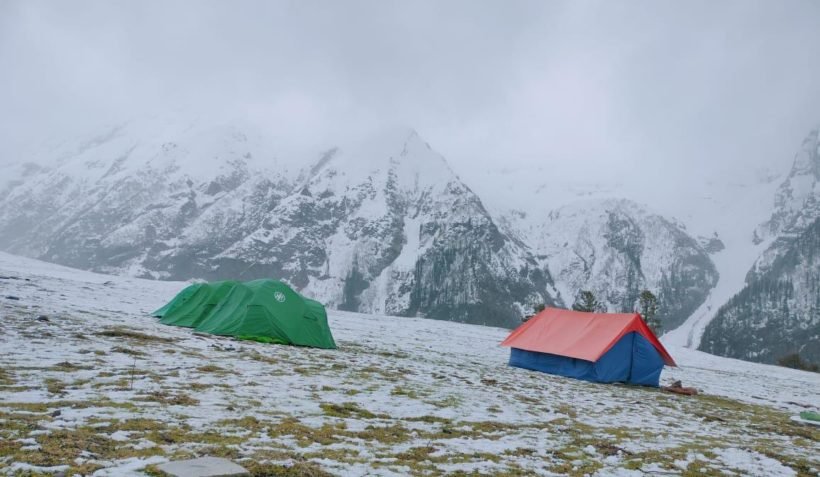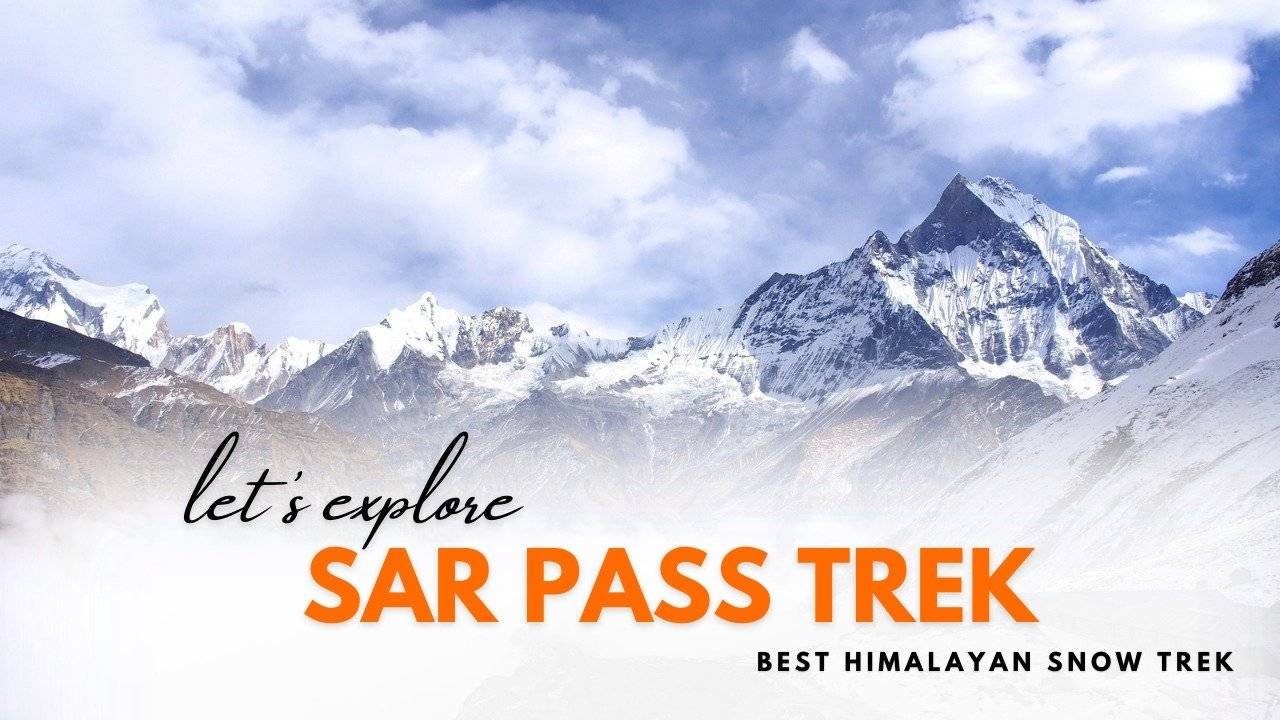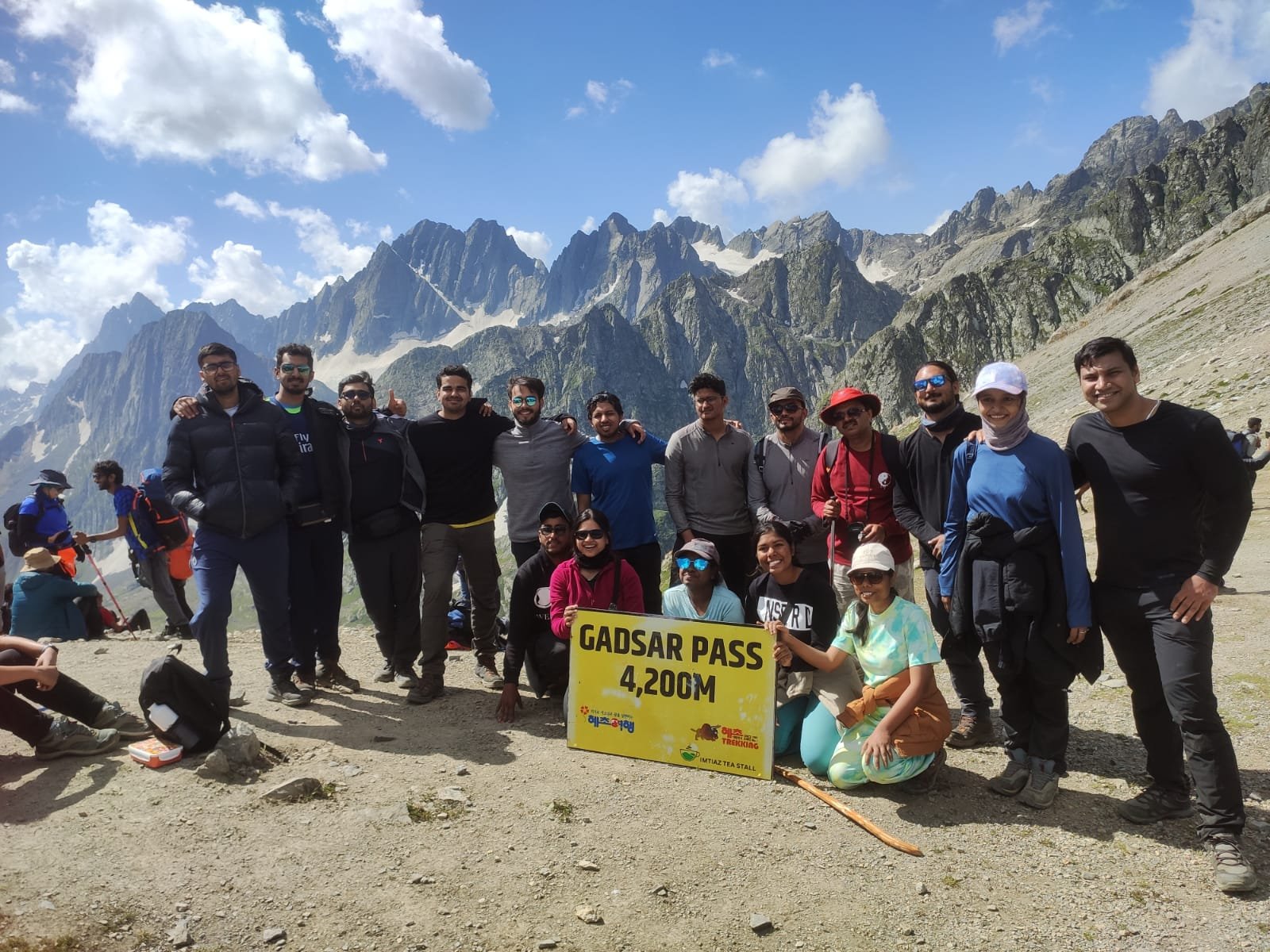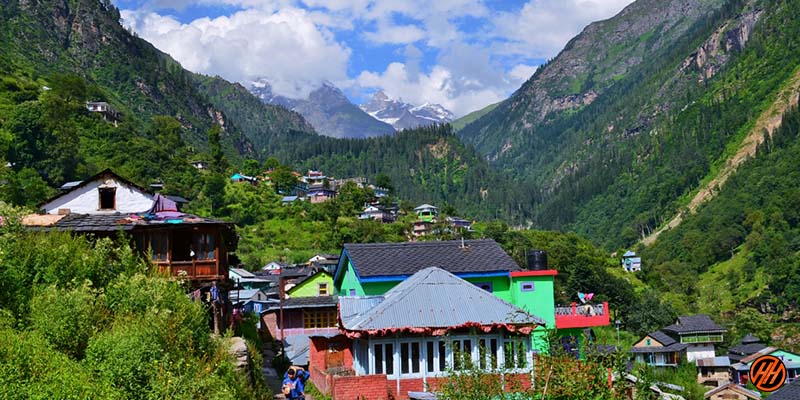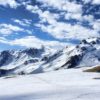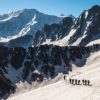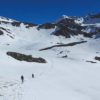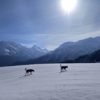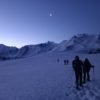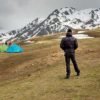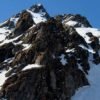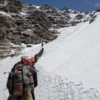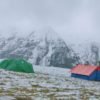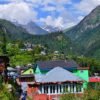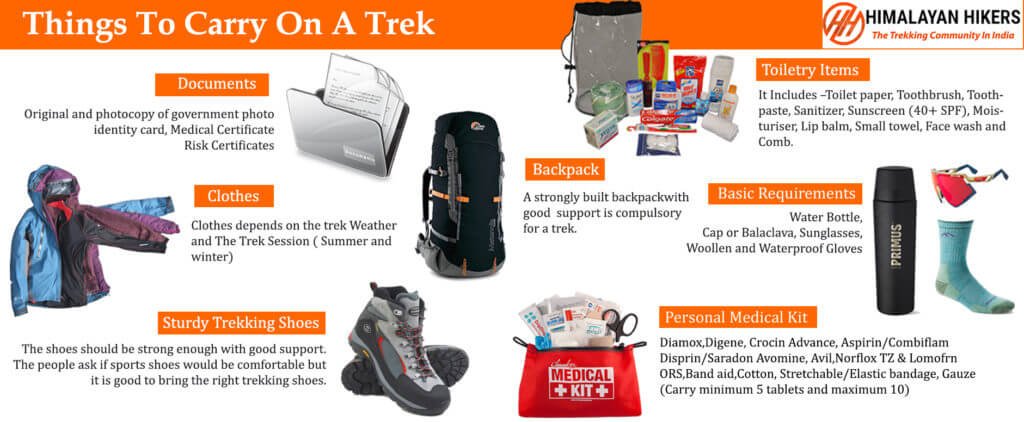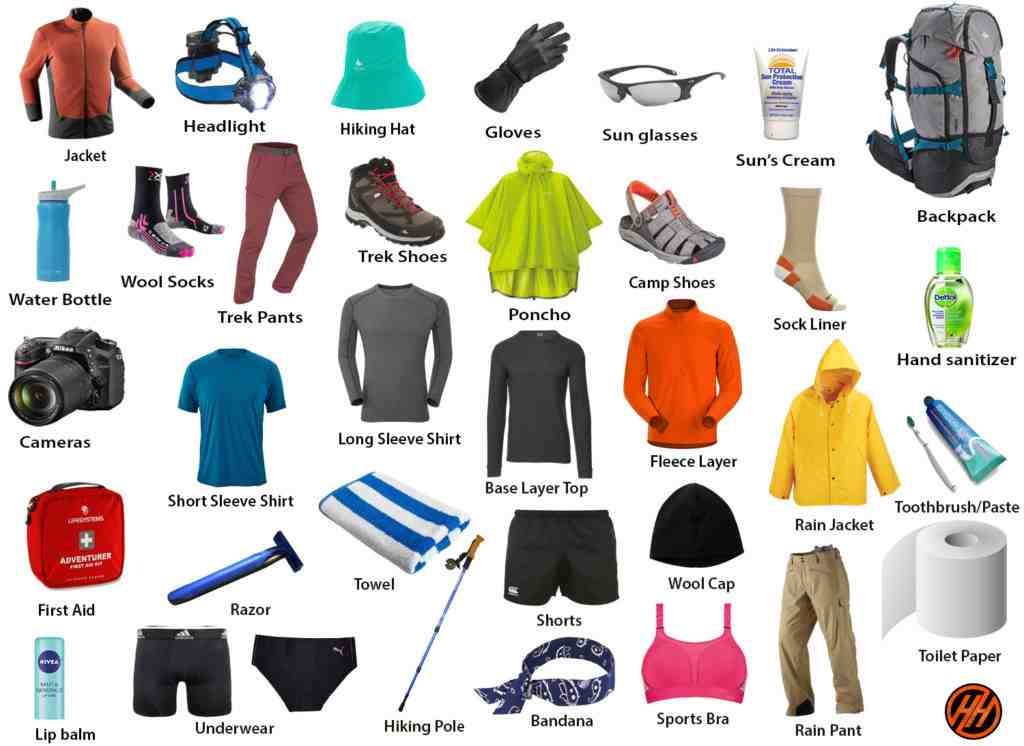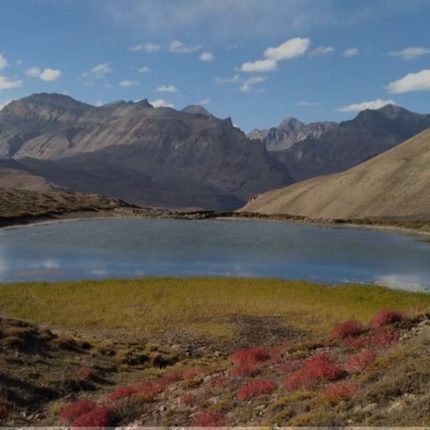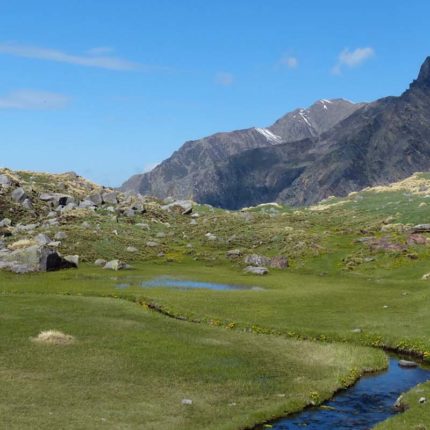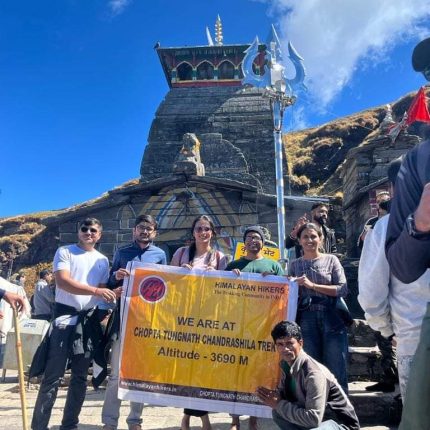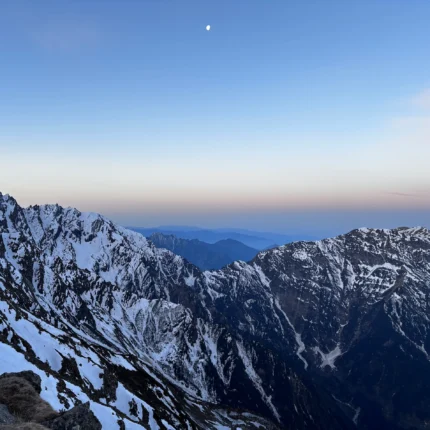Price:₹6,000.00
Sar Pass Trek 2025: Complete Guide, Itinerary, Route, Map & Best Season, Best Summer Trek in Himachal
Sar Pass Trek is one of the most beautiful and adventurous treks in Himachal Pradesh’s Parvati Valley, blending moderate adventure with soul-stirring landscapes. Some journeys test your limits, and then some quietly reshape your spirit. The Sar Pass Trek lies deep in Himachal Pradesh’s Parvati Valley. It doesn’t scream for attention; it whispers in snow-laced trails, echoes through pine-scented forests, and lingers in the hush of a high-altitude morning.
The Sar Pass trek begins for Kasol, Kullu Valley which takes you through timeless Himalayan villages like Grahan, where life moves to the rhythm of wind and woodsmoke. The Sar Pass is not about reaching the highest point, it’s about the journey you make with your fellow trekker and nature that brings you closer to your better self. The trail is adorned with numerous scenic moments, whether it’s panoramic scenes of mountains or lavish grasslands. Every step here reveals a new side of Himalayan beauty.
Plus, the silence between footfalls and the shock of cold mountain air in your lungs. The frozen lake, “Sar,” reflecting the sky like a forgotten mirror.
Every step draws you deeper into a landscape that feels untouched by time and closer to parts of yourself that modern life tends to silence. Sar Pass isn’t just a trek. It’s a conversation with nature, and maybe, just maybe, with the version of yourself you’ve been too busy to meet.
Day-by-Day Short Itinerary for Sar Pass Trek
DAY 1 – Report at Kasol Base camp before 9:30 AM. – All Group meet together- and Himalayan
Hikers team take 01 Hours for Briefing for the Sar Pass Trek | Same Day Start Trek from Kasol to Grahan village| Distance: 07 km | Trek Time: 5/6 hours | Altitude 7,709 ft | Overnight Stay at Home Grahan
DAY 2- Trek from Grahan village to Min Thach Camp
Distance: 07.5 km | Trek Time: 6/7 hours | Altitude 11,154 ft | Overnight Stay Camp at–Twin/ Three Sharing
DAY 3- Trek from Min Thach Camp to Nagaru Base of Sar Pass
Distance: 05 km | Trek Time: 5/6 hours | Altitude 12,400 ft | Overnight Stay Camp at–Twin/ Three Sharing
DAY 4- Trek from Nagaru Base to Biskeri Thach via SAR Pass Summit
Altitude 13,600 ft | Distance: 12 km | Trek Time: 7/8 hours | Cross to Sar Pass to Biskeri Camp Altitude 11,100 ft | Overnight Stay Camp at–Twin/ Three Sharing
DAY 5- Trek from Biskeri Thach to Pulga Road
Distance: 06 km | | Trek Time: 4/5 hours | Same Day Drive to Kasol Market -Distance: 15 km | Trek Time: 1 hours
Himalayan Hikers Drop Kasol around 1 to 2 PM END OUR SERVICE HERE
Why choose Himalayan Hikers for Sar Pass
We’re here to give you the greatest experience possible through the eyes of highly skilled and qualified specialists who have a passion for adventure sports. We are community members attempting to promote trekking and other adventure activities while supporting local businesses. At Himalayan Hikers, we dedicate ourselves to providing you with an unforgettable experience.
Cultural and Historical Significance of Sar Pass Trek
Sar Pass has been deeply rooted in the Himachali cultures. The word ‘Sar’ means ‘Lake’ and ‘Pass’ is an English word which means a route that connects at least two locations. The Sar Pass lies in the Parvati Valley of Himachal Pradesh, and the starting point for the Sar Pass trek is Kasol.
Historical Importance of Sar Pass
This trek route has been used by the nomadic sheepherder communities (Gaddi charvahe) for seasonal grazing. Plus, it was used for trade between Himalayan villages and the major market of Kullu-Manali.
Influence of Hippie Culture
During the ‘60s and ‘70s, the rise of popular English-American music bands popularized the idea of freedom and self-exploration, which led to thousands of wanderers and spiritual seekers in the lap of the Himalayas. Villages like Kasol, Tosh, and beyond became pit stops on the fabled Hippie Trail. Free spirits from across the globe chased peace and wild beauty here, mingling with locals and spilling the secret of Sar Pass to the world..
Sar Pass Today: Green and Always Growing
Now, Sar Pass stands tall as a beacon of eco-adventure. Guides and groups preach the gospel of tread lightly while honoring the cultural and environmental aspects to protect the fragile ecosystems of the Himalayas.

Experience the Sar Pass Trek: What Makes This Himalayan Trail Special?
- Scenic Beauty: The trek takes you through beautiful forests of oak, pine, and deodar trees, offering stunning views of the surrounding Himalayan ranges. You’ll come across enchanting meadows, gushing streams, and charming villages, making it a visual treat for nature lovers.
- Sar Pass: The highlight of the trek is reaching the Sar Pass, which sits at an altitude of approximately 13,800 feet (4,200 meters). The pass offers panoramic views of the snow-clad peaks of the Parvati Valley, Tosh Valley, and the mighty Himalayas.
- Challenging Terrain: The Sar Pass Trek is considered moderately difficult, making it an ideal choice for trekkers looking for a challenge. The trail includes steep ascents, narrow ridges, and tricky descents, which add an adventurous element to the journey.
- Camping Experience: During the trek, you’ll get to experience camping in the serene Himalayan wilderness. Camping sites like Grahan, Min Thach, Nagaru, and Biskeri Thach offer stunning views and a chance to connect with nature.
- Cultural Interaction: The Sar Pass Trek takes you through traditional Himachali villages where you can interact with the locals and get a glimpse into their way of life. It’s an opportunity to learn about the local culture, traditions, and cuisine.
- Adventurous Activities: The Sar Pass Trek also offers opportunities for adventure activities like rappelling and rock climbing. These activities add an extra thrill to the overall trekking experience.
- Hot Springs: After completing the Sar Pass Trek, you have the option to visit the nearby Manikaran hot springs. These natural hot water springs are considered sacred and are believed to have medicinal properties. It’s a perfect way to relax and rejuvenate after the trek.

This trek will surely give you an Adrenaline rush and a thrilling experience adorned with alpine forests, wildflowers, and magical valleys.
Sir Pass Trek is a high-altitude mountain pass trek located in the state of Himachal Pradesh in India. It is considered to be one of the most challenging and scenic treks in the region. The trek begins from the village of Kasol and takes you through the lush green forests, meadows, and valleys of the Parvati Valley.
One of the unique features of Sar Pass Trek is the diverse landscapes and terrain it covers. The trek takes you through pine forests, river streams, and vast meadows and also involves crossing high-altitude passes covered in snow and ice. This diversity in terrain and landscape makes the trek all the more challenging and exciting for adventure seekers.
Another special aspect of the Sir Pass Trek is the breathtaking views it offers. During the trek, you will get to witness stunning vistas of snow-capped peaks, glaciers, and valleys. The trek also takes you through remote villages and hamlets where you can experience the local culture and traditions.
Overall, the Sir Pass Trek is a unique and challenging adventure that offers a truly unforgettable experience for trekkers and nature lovers.
How Difficult is the Sar Pass Trek? Is it safe?
The Sar Pass Trek is considered a moderate trek, suitable for trekkers with some prior trekking experience. Here are some factors that contribute to its level of Moderate or difficulty:
- Altitude: The trek reaches an altitude of approximately 13,800 feet (4,200 meters) at Sar Pass. As you ascend to higher altitudes, the air becomes thinner, and the oxygen levels decrease. This can cause altitude-related challenges such as shortness of breath, fatigue, and altitude sickness. It is essential to acclimatize properly, stay hydrated, and listen to your body’s signals.
- Terrain: The trail consists of various terrains, including steep ascents, narrow ridges, rocky sections, and snow patches, especially in the early summer months. You will encounter steep climbs and descents, requiring good physical fitness, balance, and endurance. The terrain can be challenging and demanding at times, requiring careful footing and cautious navigation.
- Weather Conditions: Weather conditions in the mountains can be unpredictable, even during the best trekking seasons. You may encounter rain, snow, and cold temperatures, especially at higher altitudes. It is important to pack appropriate clothing and gear to withstand changing weather conditions.
- Duration and Distance: The Sar Pass Trek is a 5-day, 4-night adventure, covering a distance of approximately 37 km through the stunning Parvati Valley. You’ll trek 4-7 hours daily, starting from Kasol (1,580m) to the summit at 13,800 ft.
- Camping and Facilities: The trek involves camping in tents at designated campsites along the route. Basic facilities like toilet tents and a limited water supply are available, but you should be prepared for rustic camping conditions.
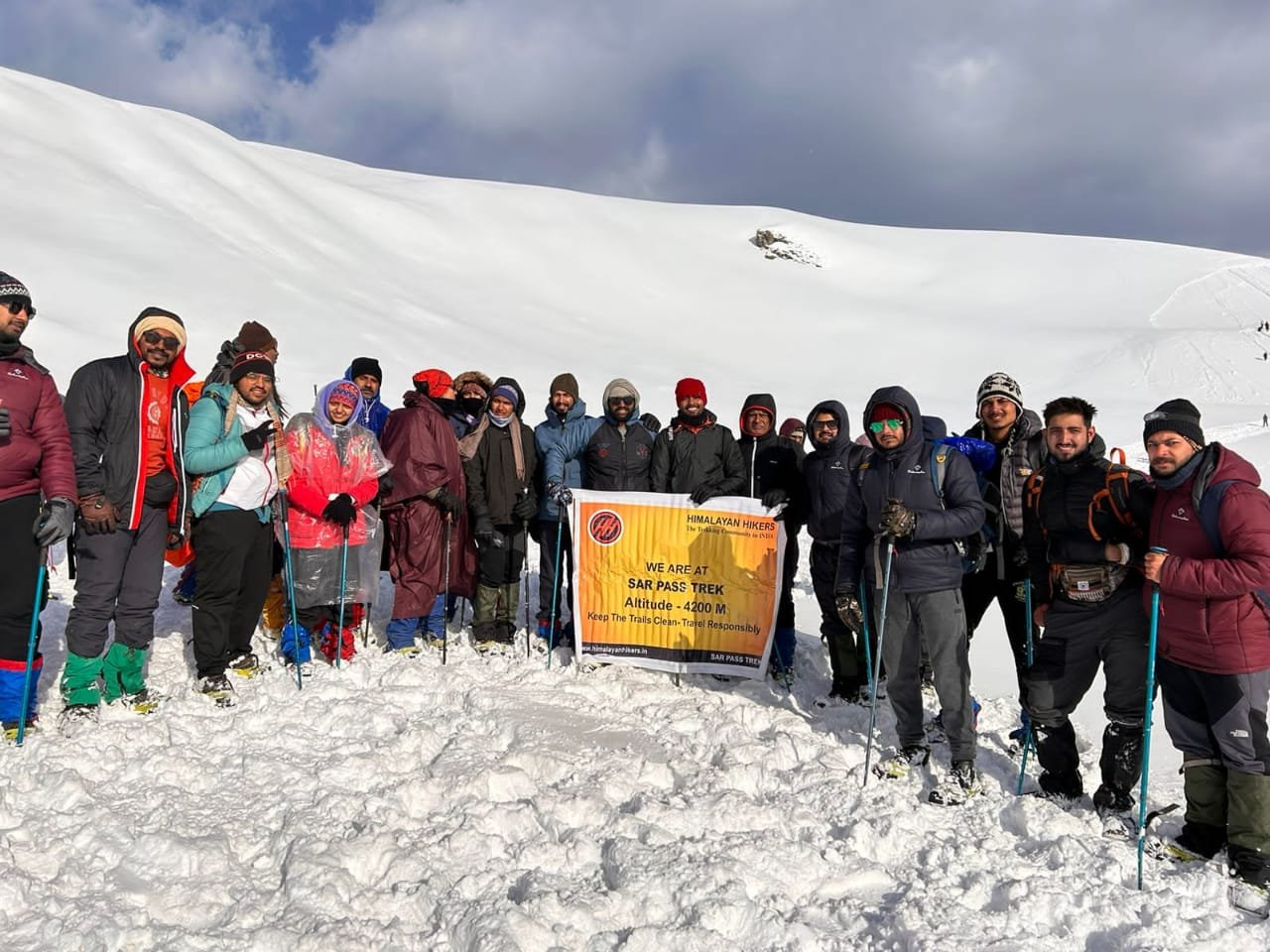
Is Sar Pass trek safe?
Set amidst the high-altitude ranges, concerns regarding Sar Pass trek safety are indeed very valid questions. We have all the possible probabilities calculated if anything goes off the schedule.
At every stop point of the journey, trekkers will be going through a properly guided session informing them about the upcoming terrains. All our professionals strive their best to provide trekkers with the best experience possible.
Sar Pass Trek: Best High-Altitude Trek for Beginners in the Himalayas
One can experience all kinds of trails and go through old-fashioned Himalayan villages, wide and narrow meadows, and forests.
You get to experience terrain varieties on this trek, and its starting point is Kasol, away from cities. People from different areas visit this place and it’s a famous tourist destination.
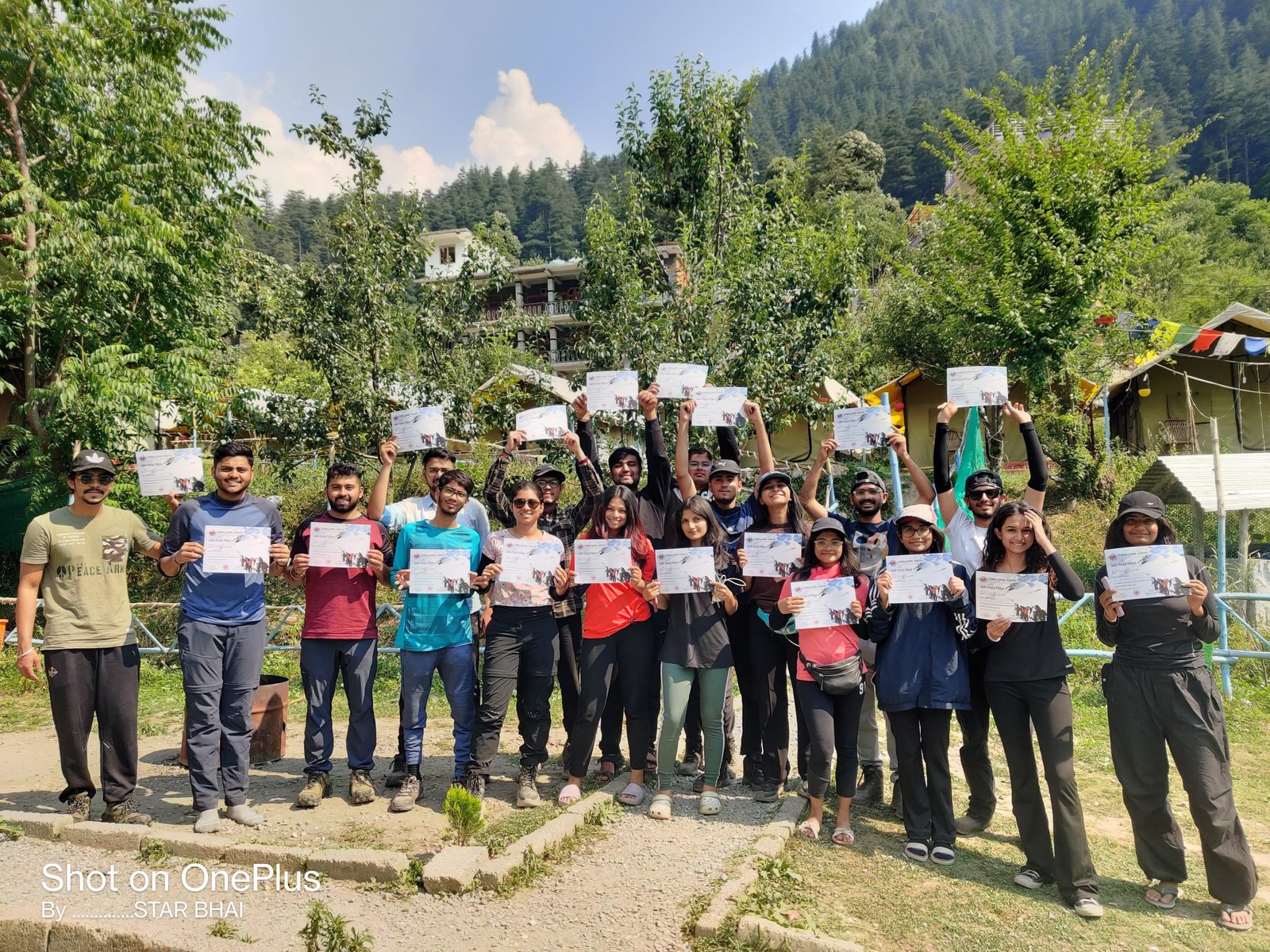
Best Time to Visit Sar Pass Trek
The best time to undertake the Sar Pass Trek is during the summer and post-monsoon seasons, which typically fall between May and October. Here’s a breakdown of the different seasons and their characteristics:
Summer Season (May to June): This is the ideal time for the Sar Pass Trek, as the weather is pleasant, with mild temperatures during the day and cool nights. The trails are usually clear of snow, allowing for a relatively easier trek. The meadows are in full bloom, offering vibrant landscapes and picturesque views.
Monsoon Season (July to August): The monsoon season brings heavy rainfall to the region, making the trekking trails slippery and risky. It is not recommended to undertake the Sar Pass Trek during this time, as the chances of landslides and flash floods increase.
Post-Monsoon Season (September to October): After the monsoon season, the weather starts to clear up, and the landscapes become lush green again. This period is considered the shoulder season for the Sar Pass Trek. The crowds are thinner compared to the summer season, and the weather remains favorable for trekking. However, towards October, temperatures start to drop, especially during the nights, so you should be prepared for colder conditions.
Sar Pass Trek Highlights
The base camp for this trek is Kasol, which is located near the Parvati River’s banks in the Parvati valley. The trek to Sar officially begins in Kasol, a town well-known for its pretty coniferous forest and mountain streams. The trek trails through dense forests and progresses to a total snow-covered setting. The trail then further loops through pine forests, charming old-world villages, majestic snow-capped mountains, and some of the most breathtaking scenery.
Rhododendrons abound in the forest near the descent; trekkers can expect to be taken aback by the breathtaking scenery. The Nagaru campsite, which is also the highest point during the entire trek, is blessed with beautiful mountains across the Parvati valley. It arrives after the shepherd’s trail of Mung Thatch. During the trek, hikers pass through several small meadows, most of which are grazed by villagers with their livestock
Things to Look out for Sar Pass Trek
- The trek is certain to provide unrivalled feelings of accomplishment.
- Various villages with many opportunities to interact with the locals will keep you entertained throughout the journey.
- Explore the enthralling forest of rhododendrons.
- Various ascents and descents will encourage you to put your endurance to the test and eventually overcome them.
- The panoramic view of snow-covered trails and peaks from the top is well worth the effort trekkers will expend on their journey.
- Camping under the clear night sky filled with stars is an experience in and of itself.
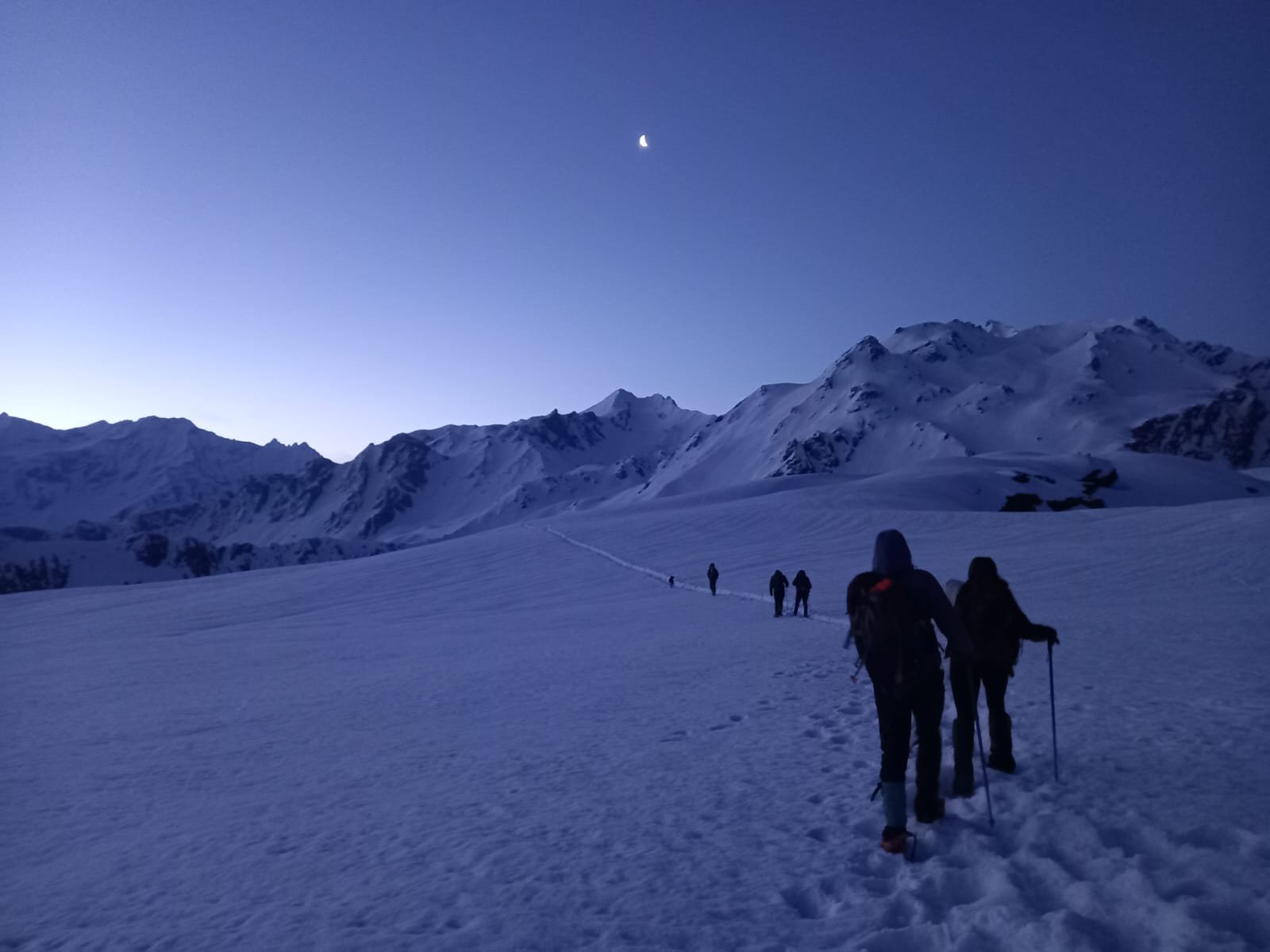
Trekking Fitness Training – Best Workouts for Strength & Stamina
Trek Fitness Chart
Before embarking on a trek, trekkers need to prepare their bodies physically. Trekking can be demanding, and it requires a certain level of physical fitness to avoid injury and fully enjoy the experience. Here are some important fitness considerations for trekkers:
Target: 4.5 km in 45 Minutes (Easy to Moderate Level Trek)
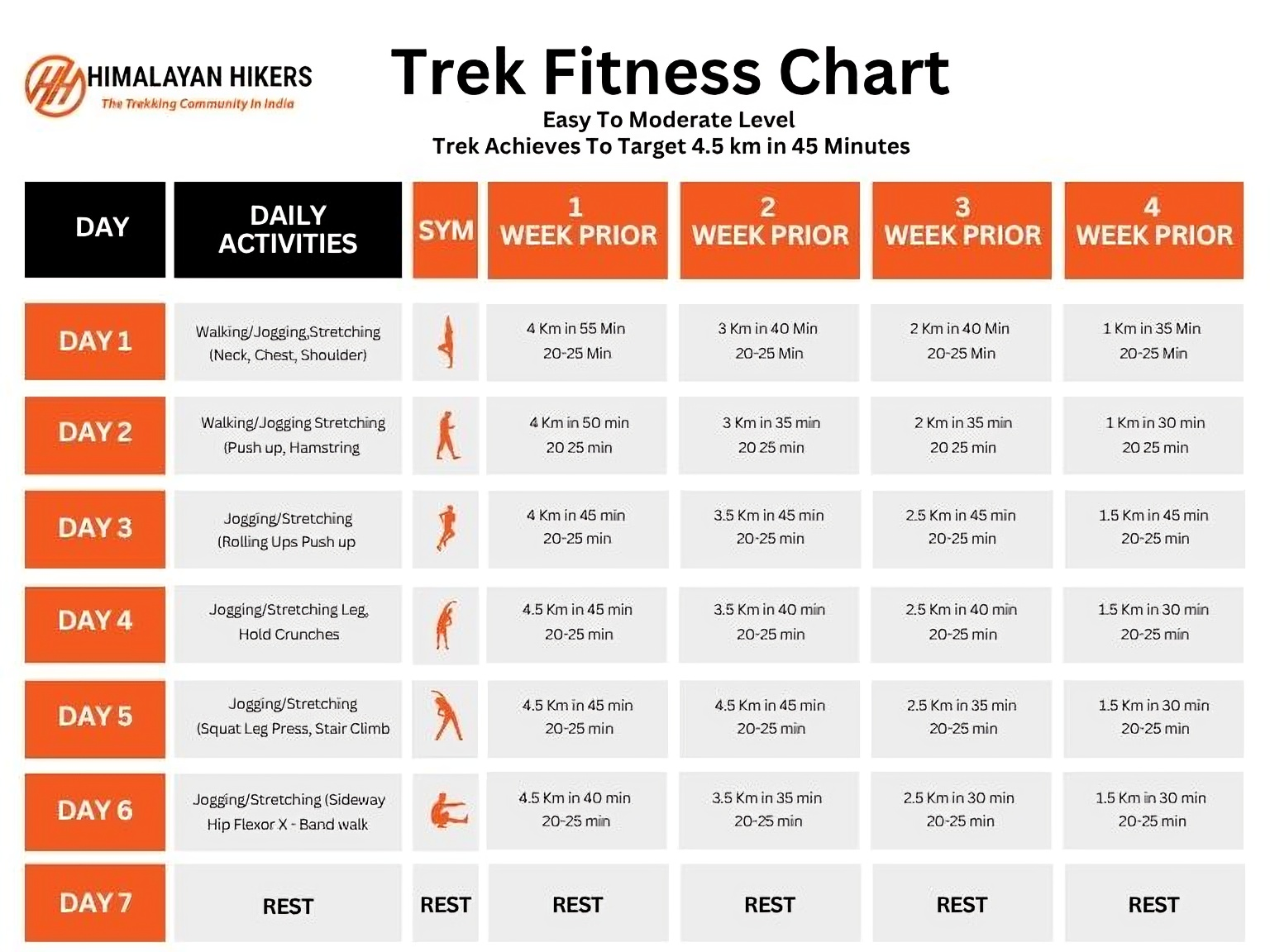 Now Begins Your Trekking Journey!
Now Begins Your Trekking Journey!
Cardiovascular endurance: Trekking involves walking long distances and often at high altitudes, which can be challenging for the cardiovascular system. Cardiovascular exercises such as running, cycling, or swimming can help improve endurance.
Strength training: Trekking requires strength in the legs, core, and upper body. Strength training exercises such as squats, lunges, planks, and push-ups can help build the necessary strength.
Flexibility and balance: Trekking involves navigating uneven terrain and often requires the body to move in different directions. Stretching exercises and activities that improve balance such as yoga or Pilates can be helpful.
Altitude acclimatization: If you’re planning a high-altitude trek, it’s important to acclimatize properly. This means gradually increasing your altitude over a period of days to allow your body to adjust to the lower oxygen levels.
Mental preparation: Trekking can be mentally challenging, so it’s important to prepare yourself mentally as well. Practicing mindfulness, meditation, or other stress-reducing techniques can be helpful.
It’s important to remember that everyone’s fitness level and needs are different, so it’s a good idea to consult with a doctor or fitness professional before starting any new exercise program.
How to Reach Kasol for Sar Pass Trek?
To reach Kasol, the base village for the Sar Pass Trek, you can follow these general directions:
By Air: The nearest airport to Kasol is Bhuntar Airport, located approximately 31 kilometers away. You can take a flight to Bhuntar Airport from major cities like Delhi or Chandigarh. From the airport, you can hire a taxi or take a local bus to Kasol.
By Train: The nearest major railway station to Kasol is Pathankot Railway Station, which is well connected to major cities in India. From Pathankot, you can take a bus or hire a taxi to reach Kasol. Another option is to take a train to Chandigarh Railway Station and then continue your journey to Kasol by bus or taxi.
By Road: Kasol is well-connected by road and can be reached by bus or taxi from various cities. Here are a few common routes:
From Delhi: You can take a bus from Delhi to Bhuntar, which is the nearest major town to Kasol. From Bhuntar, you can take a local bus or hire a taxi to reach Kasol, which is approximately 30 kilometers away.
From Chandigarh: You can take a bus or hire a taxi from Chandigarh to Kasol. The distance between Chandigarh and Kasol is around 275 kilometers.
From Manali: If you are coming from Manali, you can take a local bus or hire a taxi to Kasol. The distance between Manali and Kasol is approximately 80 kilometers.
Some important points to note for Sar Pass
Please note that we don’t provide timing schedules for transportation before Manali. Subject to various conditions, the scheduled timings and availability of particular rides may differ.We recommend that trekkers reach out to our teams with any queries.You can drop an email or call us for an initial guided session.Our teams will be collecting trekkers at fixed points of airports, railway stations, and bus stands.It is recommended that unless any delay arrives, trekkers are advised to reach the destinations at least 2 hours prior.
Phone Connectivity and ATM Transactions
1) Because connectivity along the route is unpredictable, we urge people to do all of their work ahead of time.
2) Trekkers will be provided with walkie-talkies beforehand in case of emergency.
3) The last ATM transactions available will be at Kasol but we recommend travelers to collect cash beforehand or while in Manali as ATM availability at other places might not dispense cash at times.
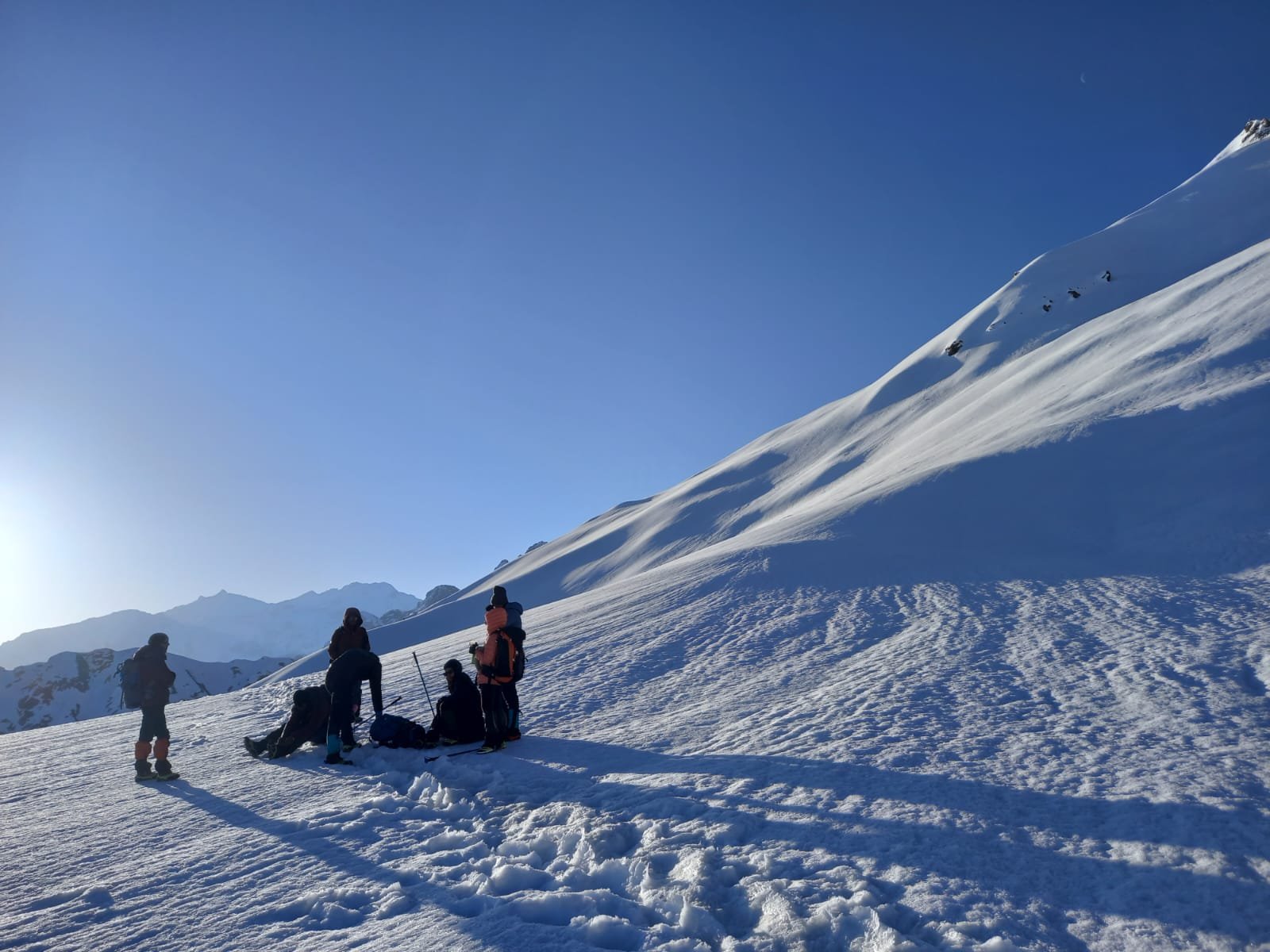
How to get fit for the Sar Pass Trek in Himachal Kasol?
Here are some tips to help you get fit for the trek:
- Cardiovascular Fitness: Trekking involves long hours of walking and endurance. Engage in activities that improve your cardiovascular fitness, such as jogging, cycling, swimming, or brisk walking. Start with shorter distances or durations and gradually increase the intensity and duration of your workouts over time.
- Leg Strength and Endurance: Trekking requires strong leg muscles to tackle uphill and downhill sections. Incorporate exercises like squats, lunges, step-ups, and calf raises into your fitness routine. Include both strength training and endurance-building exercises for your legs.
- Core Strength: A strong core is essential for maintaining balance and stability during the trek. Include exercises like planks, Russian twists, mountain climbers, and sit-ups to strengthen your core muscles.
- Stair Climbing: Find a nearby staircase or use a stair-climbing machine at the gym to simulate the uphill and downhill sections of the trek. Regular stair climbing workouts will help build strength and endurance in your legs.
- Backpack Training: As you will be carrying a backpack during the trek, gradually increase the weight of your backpack during your training sessions. Start with a lighter load and gradually add weight to simulate the weight you’ll carry during the trek.
- Flexibility and Stretching: Engage in regular stretching exercises to improve flexibility and prevent muscle stiffness. Focus on stretching your leg muscles, lower back, shoulders, and neck.
- Mental Preparation: Trekking requires mental resilience and determination. Prepare yourself mentally by setting realistic goals, visualizing the trek, and staying positive. Practice mindfulness and relaxation techniques to manage stress and keep a calm mindset during challenging moments.
- Hydration and Nutrition: Stay hydrated throughout your training period and during the trek. Maintain a balanced diet rich in carbohydrates, proteins, and essential nutrients to fuel your body and aid in recovery.
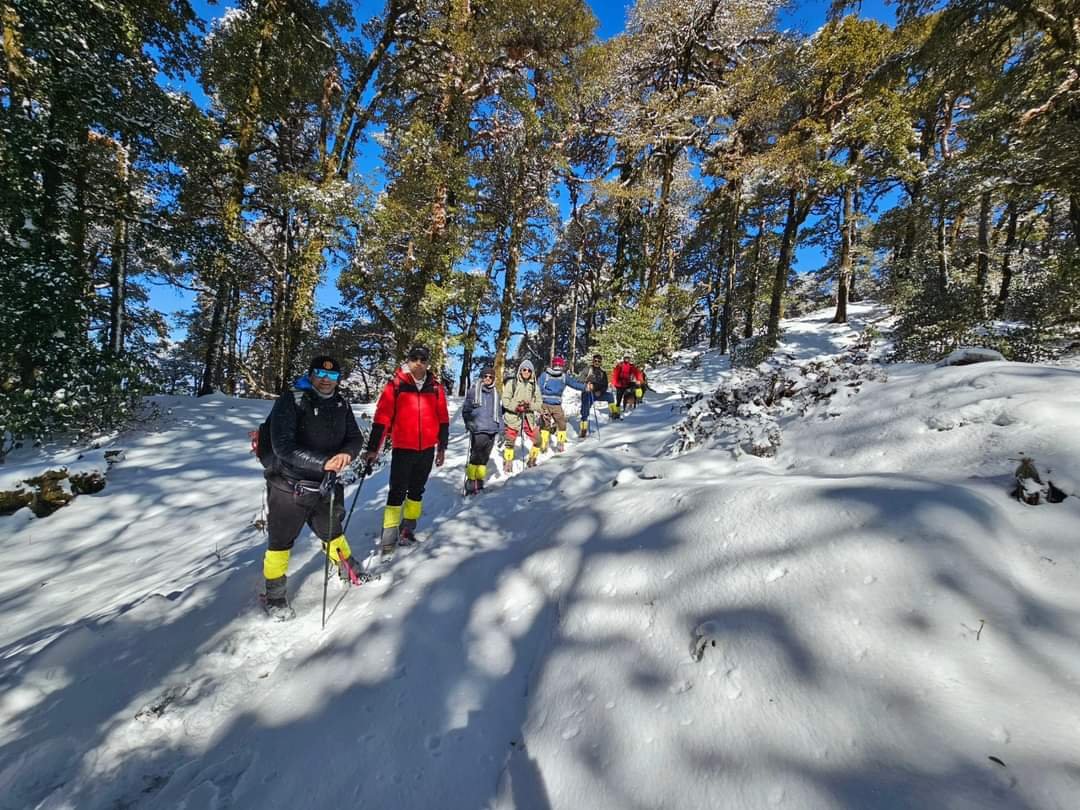
Himalayan Hikers – Provided food during the Sar Pass Trek
We serve five -05 times meals a day including- Breakfast, Lunch, Evening Snakes, Soup, Dinner, A variety of delectable and healthy food is provided which includes; Indian, Chinese and other Western meals. They are nutritious and keep you fit and healthy on the trek.
The type of food provided during a trek can vary depending on factors like the location, duration, and the trekking company or organization you’re with.

However, there are some common types of food that are often included in trekking provisions:
- Carbohydrates: Foods high in carbohydrates provide energy for the trek. This includes items like rice, pasta, bread, and potatoes. More
- Proteins: Protein-rich foods help with muscle repair and recovery. Common protein sources include lentils, beans, tofu, meat (if available), eggs, and dairy products.
- Fruits and vegetables: These provide essential vitamins, minerals, and fiber. While fresh produce may not always be available, dried fruits and vegetables or canned options might be included.
- Snacks: Trekking often involves long hours of physical exertion, so snacks are important for quick energy boosts. Snacks like nuts, energy bars, trail mix, and chocolate are common choices.
- Local cuisine: Depending on the region you’re trekking in, you might also get the chance to sample local dishes. This can be a delightful way to experience the culture and flavors of the area.


